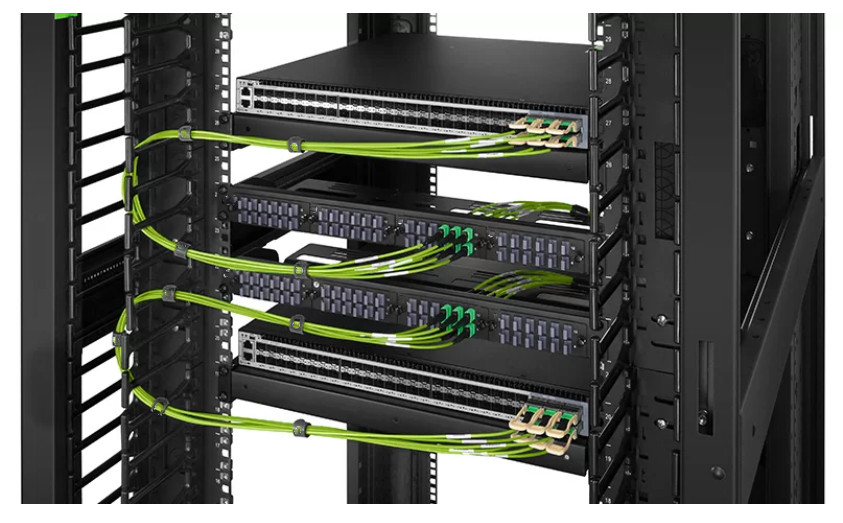What are the advantages of om5 optical fiber patch cord and what are its application fields?
OM5 optical fiber is based on OM3 / OM4 optical fiber, and its performance is extended to support multiple wavelengths. The original design intention of om5 optical fiber is to meet the wavelength division multiplexing (WDM) requirements of multimode transmission system. Therefore, its most valuable application is in the field of short wave division multiplexing. Then, let’s talk about the advantages and applications of OM5.
1.OM5 Optic Fiber Patch Cord
Optic Fiber Patch Cord is used as jumper from equipment to optical fiber wiring link, with thick protective layer. With the increasing requirements of data center for transmission rate, om5 optical fiber patch cord began to be used more and more.
At first, OM5 optic Fiber Patch Cord was called broadband multimode optic Fiber Patch Cord (WBMMF). It is a new standard of optical fiber jumper defined by TIA and IEC. The fiber diameter is 50 / 125um, the working wavelength is 850 / 1300nm, and can support four wavelengths. In terms of structure, it is not significantly different from OM3 and OM4 optic Fiber Patch Cord, so it can be fully backward compatible with traditional OM3 and OM4 multimode optic Fiber Patch Cord
2.Advantages of OM5 Optic Fiber Patch Cord
High degree of recognition: OM5 optical fiber patch cord was originally issued as TIA-492aae by the communication industry association, and was unanimously recognized in the ANSI / TIA-568.3-D revision comment collection issued by the American National Standards Association;
Strong scalability: OM5 optical fiber patch cord can combine short wave division multiplexing (SWDM) and parallel transmission technology in the future, and only 8-core broadband multimode fiber (WBMMF) is required to support 200 / 400g Ethernet Applications;
Reduce cost: om5 optical fiber jumper draws lessons from the wavelength division multiplexing (WDM) technology of single-mode fiber, extends the available wavelength range during network transmission, can support four wavelengths on one core multimode fiber, and reduces the number of fiber cores required to 1 / 4 of the previous one, which greatly reduces the wiring cost of the network;
Strong compatibility and interoperability: om5 optical fiber patch cord can support traditional applications like OM3 optical fiber patch cord and OM4 optical fiber patch cord, and it is fully compatible and highly interoperable with OM3 and OM4 optical fiber patch cords. multimode fiber has the advantages of low link cost, low power consumption and higher availability. It has become the most cost-effective data center solution for most enterprise users.
OM5 optical fiber also supports 400G Ethernet in the future. For higher speed 400G Ethernet Applications, such as 400G Base-SR4.2 (4 pairs of optical fibers, 2 wavelengths, 50GPAM4 for each channel) or 400G Base-sr4.4 (4 pairs of optical fibers, 4 wavelengths, 25GNRZ for each channel), only 8-core OM5 optical fibers are required. Compared with the first generation 400G Ethernet 400G Base-SR16 (16 pairs of optical fibers, 25Gbps for each channel), the number of optical fibers required is only one quarter of that of traditional Ethernet. SR16, as a milestone in the development of multimode 400G technology, proves the possibility of multimode technology supporting 400G. In the future, 400G will be widely used, and 400g multimode applications based on 8-core MPO are more expected in the market.
3. Meet the transmission requirements of high-speed data center
OM5 optical fiber patch cord gives strong vitality to the super large data center. It breaks through the bottleneck of parallel transmission technology and low transmission rate adopted by traditional multimode optical fiber. It can not only use fewer multi-mode fiber cores to support higher speed network transmission, but also because it adopts lower cost short wave wavelength, the cost and power consumption of optical module will be much lower than that of single-mode fiber with long wave laser light source. Therefore, with the continuous improvement of the requirements for transmission rate, the wiring cost of the data center will be greatly reduced by using the technology of short wave division multiplexing and parallel transmission. OM5 optical fiber patch cord will have broad application prospects in the future 100G / 400G/ 1T super large data center.
Multimode fiber has always been an efficient and flexible transmission medium. Constantly developing the new application potential of multimode fiber can make it adapt to higher speed transmission network. The OM5 optical fiber solution defined by the new industry standard is optimized for multi wavelength SWDW and BiDi transceivers, providing longer transmission links and network upgrade margin for high-speed transmission networks above 100GB/s.
4. Application of OM5 optical fiber patch cord
① It is generally used in the connection between optical transceiver and terminal box, and is applied in some fields such as optical fiber communication system, optical fiber access network, optical fiber data transmission and LAN.
② OM5 fiber patch cords can be used for higher bandwidth applications. Because the manufacturing process of optical fiber preform of OM5 optical fiber patch cord has been significantly optimized, it can support higher bandwidth.
③ OM5 multimode fiber supports more wavelength channels, so the development direction of SWDM4 with four wavelengths or BiDi with two wavelengths is the same. Similar to BiDi for 40G link, swdm transceiver only needs two core LC duplex connection. The difference is that each SWDM fiber works at four different wavelengths between 850nm and 940nm, one of which is dedicated to transmitting signals and the other is dedicated to receiving signals.
Post time: Apr-02-2022




